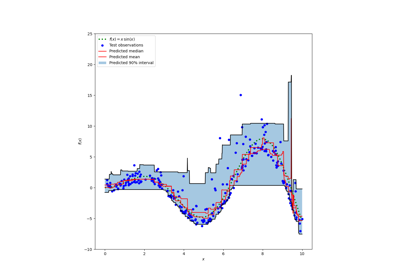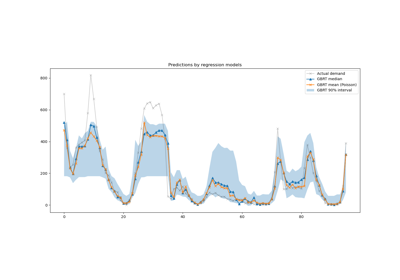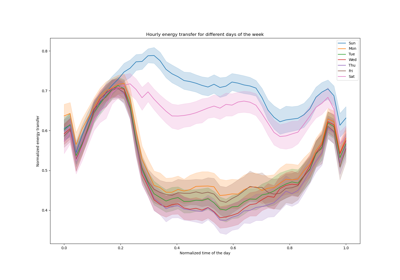mean_pinball_loss#
- sklearn.metrics.mean_pinball_loss(y_true, y_pred, *, sample_weight=None, alpha=0.5, multioutput='uniform_average')[source]#
Pinball loss for quantile regression.
Read more in the User Guide.
- Parameters:
- y_truearray-like of shape (n_samples,) or (n_samples, n_outputs)
Ground truth (correct) target values.
- y_predarray-like of shape (n_samples,) or (n_samples, n_outputs)
Estimated target values.
- sample_weightarray-like of shape (n_samples,), default=None
Sample weights.
- alphafloat, slope of the pinball loss, default=0.5,
This loss is equivalent to Mean absolute error when
alpha=0.5,alpha=0.95is minimized by estimators of the 95th percentile.- multioutput{‘raw_values’, ‘uniform_average’} or array-like of shape (n_outputs,), default=’uniform_average’
Defines aggregating of multiple output values. Array-like value defines weights used to average errors.
- ‘raw_values’ :
Returns a full set of errors in case of multioutput input.
- ‘uniform_average’ :
Errors of all outputs are averaged with uniform weight.
- Returns:
- lossfloat or ndarray of floats
If multioutput is ‘raw_values’, then mean absolute error is returned for each output separately. If multioutput is ‘uniform_average’ or an ndarray of weights, then the weighted average of all output errors is returned.
The pinball loss output is a non-negative floating point. The best value is 0.0.
Examples
>>> from sklearn.metrics import mean_pinball_loss >>> y_true = [1, 2, 3] >>> mean_pinball_loss(y_true, [0, 2, 3], alpha=0.1) 0.03... >>> mean_pinball_loss(y_true, [1, 2, 4], alpha=0.1) 0.3... >>> mean_pinball_loss(y_true, [0, 2, 3], alpha=0.9) 0.3... >>> mean_pinball_loss(y_true, [1, 2, 4], alpha=0.9) 0.03... >>> mean_pinball_loss(y_true, y_true, alpha=0.1) 0.0 >>> mean_pinball_loss(y_true, y_true, alpha=0.9) 0.0
Gallery examples#

Prediction Intervals for Gradient Boosting Regression


